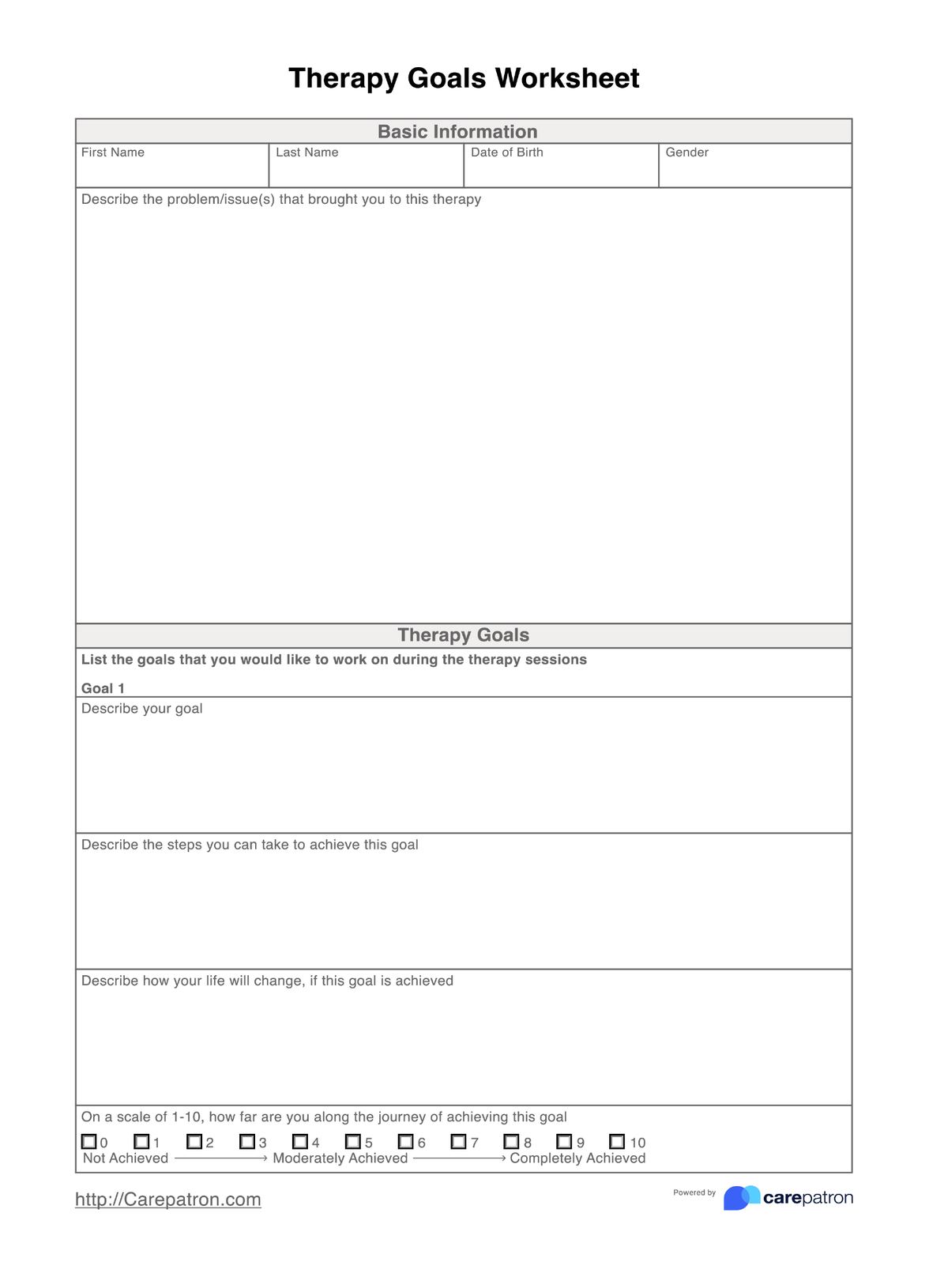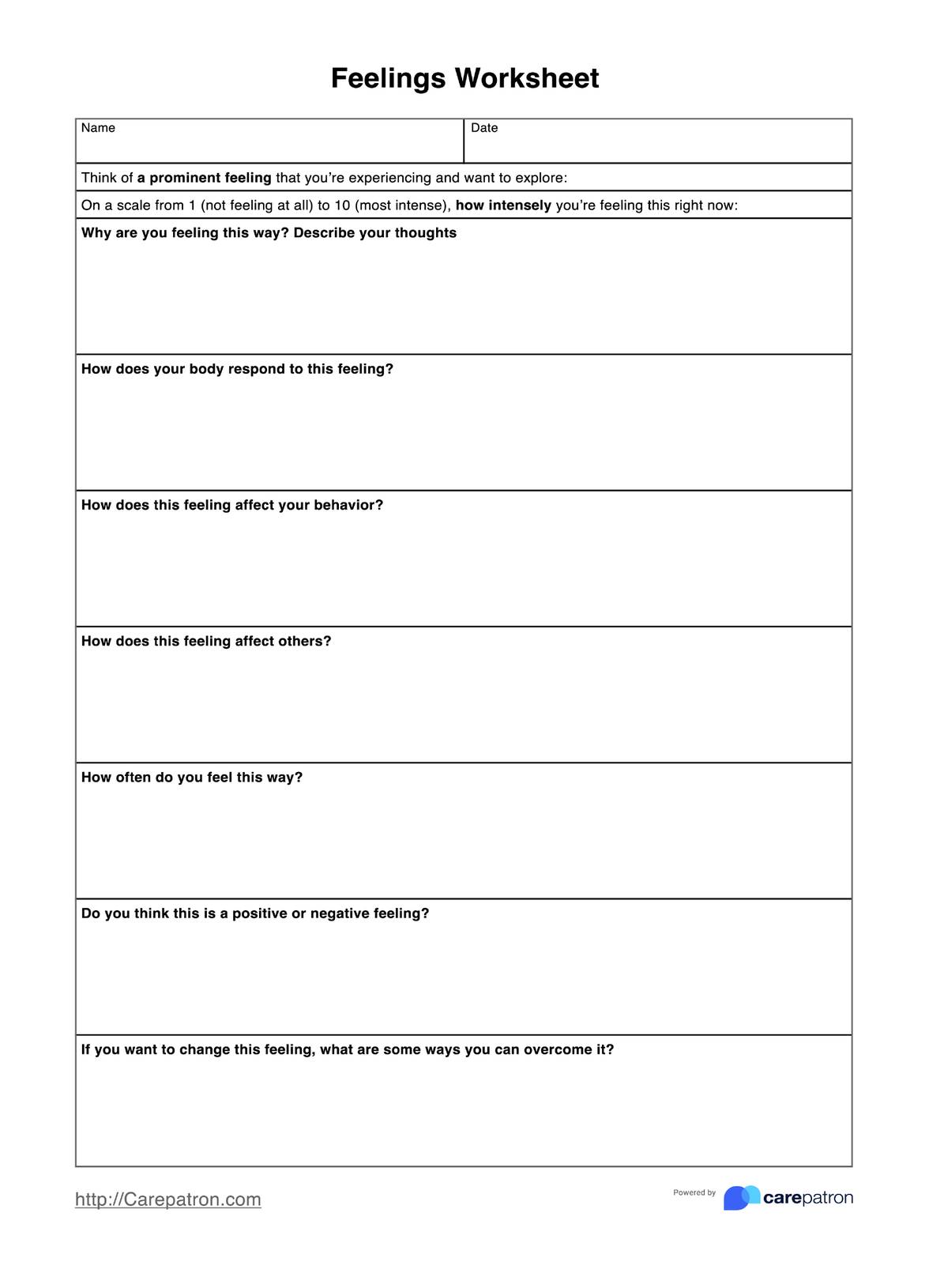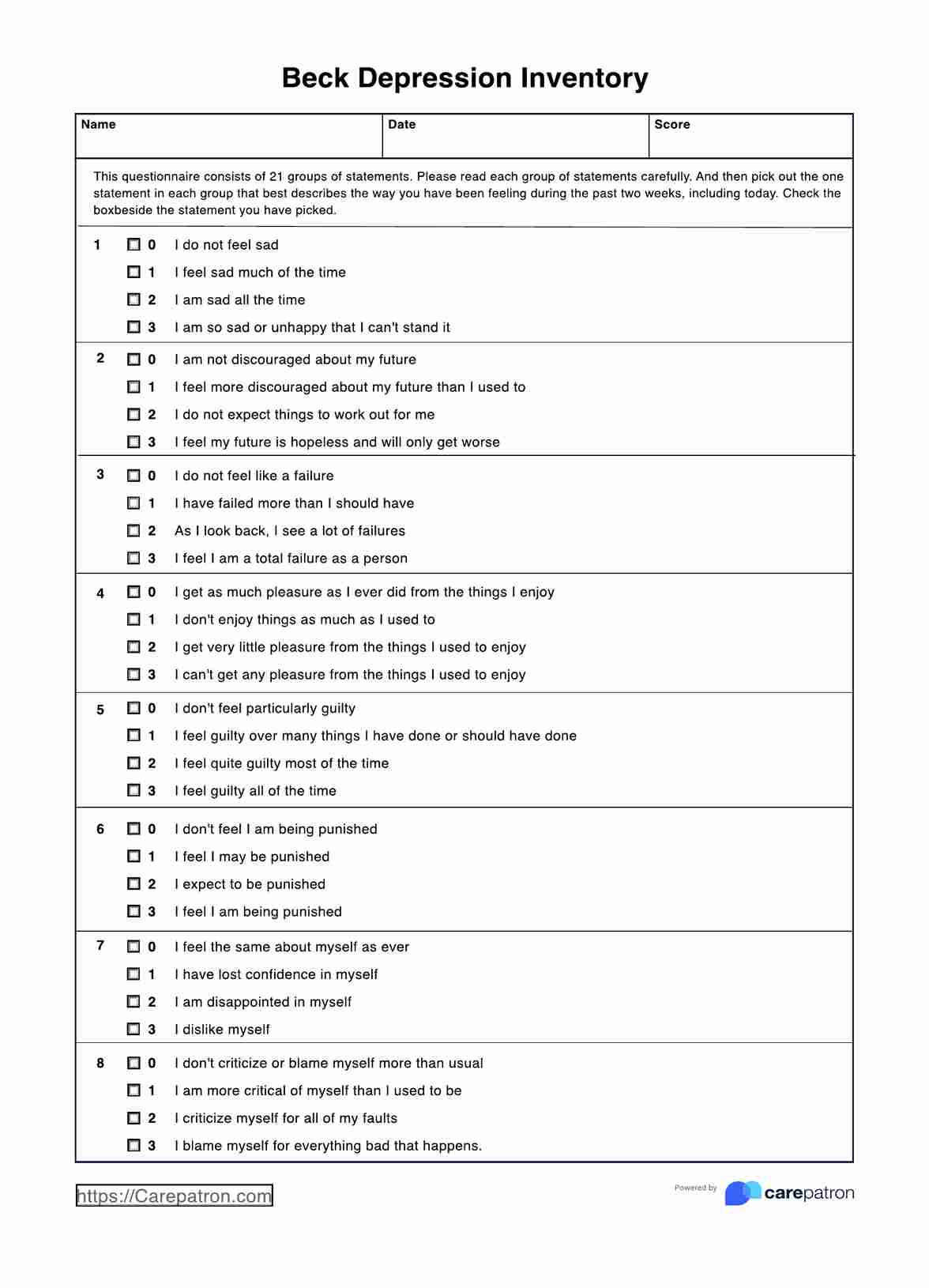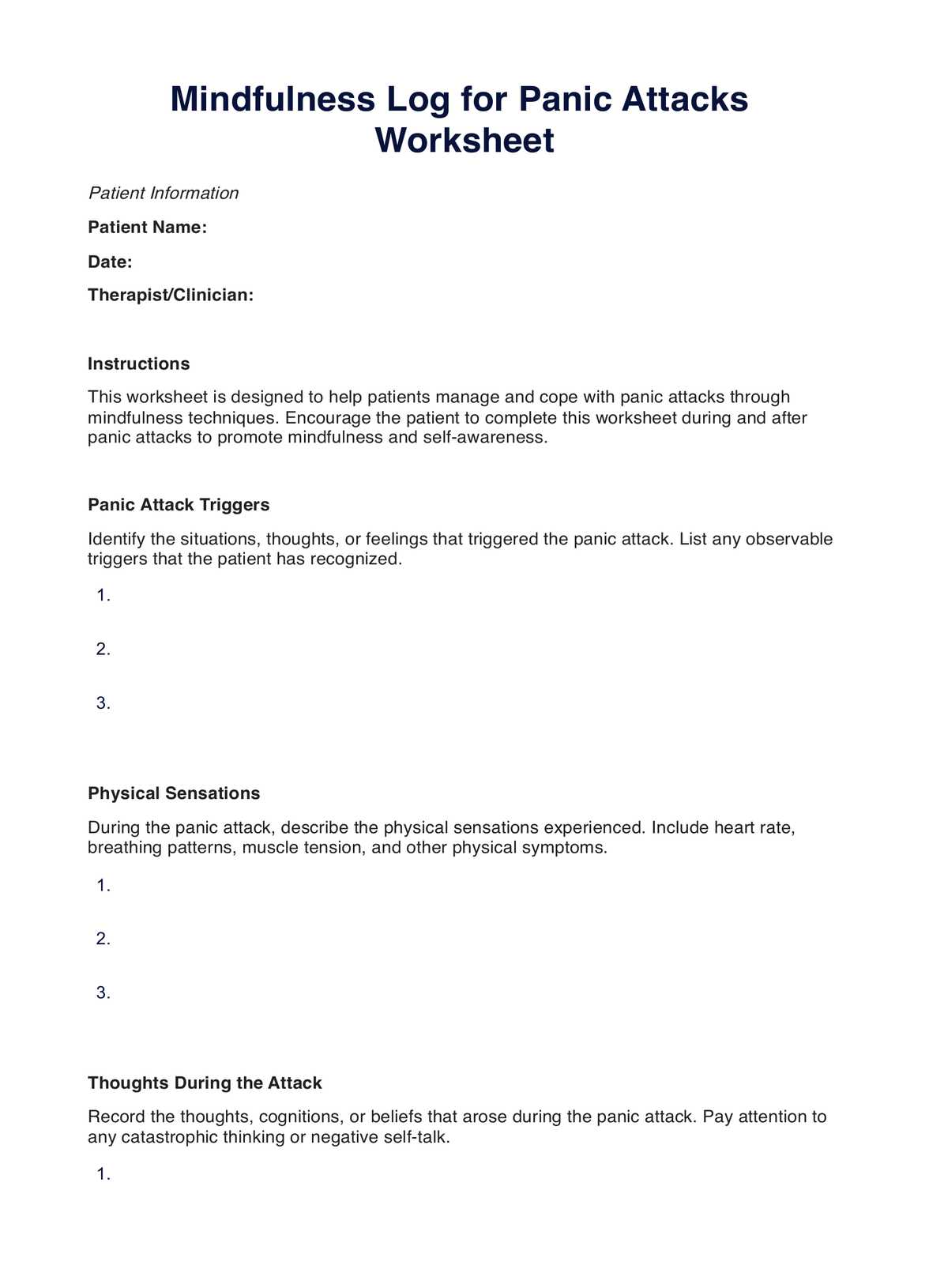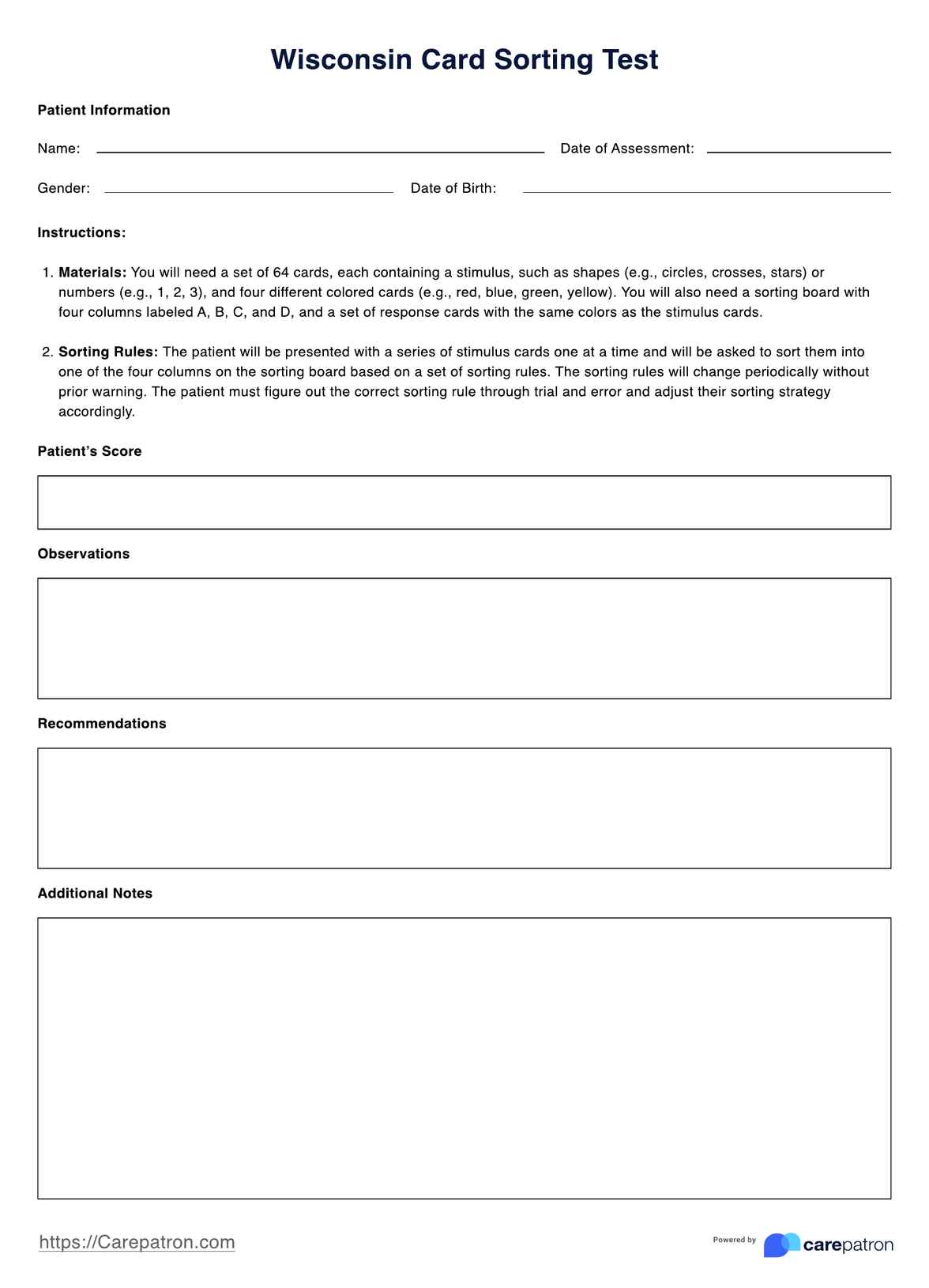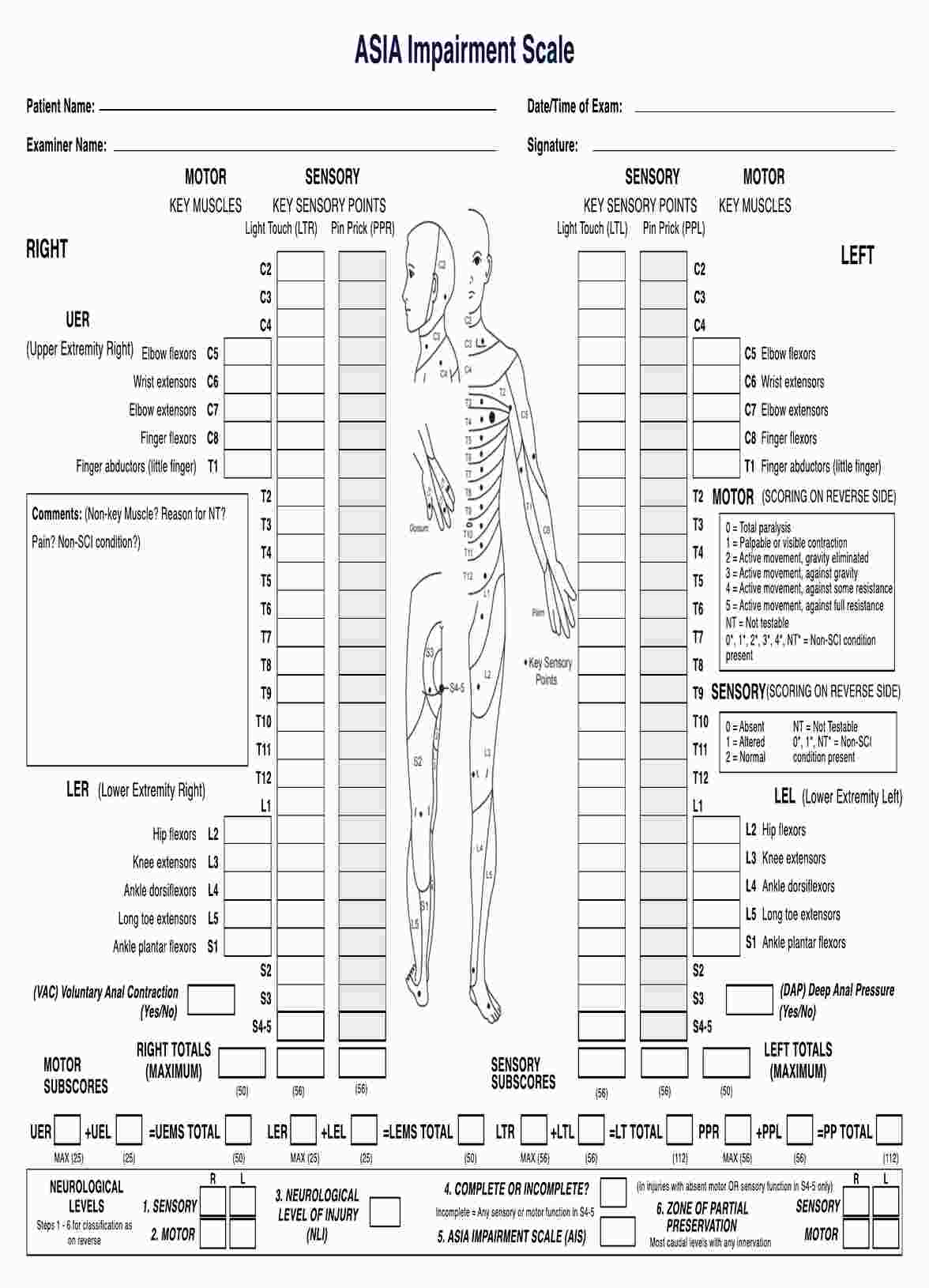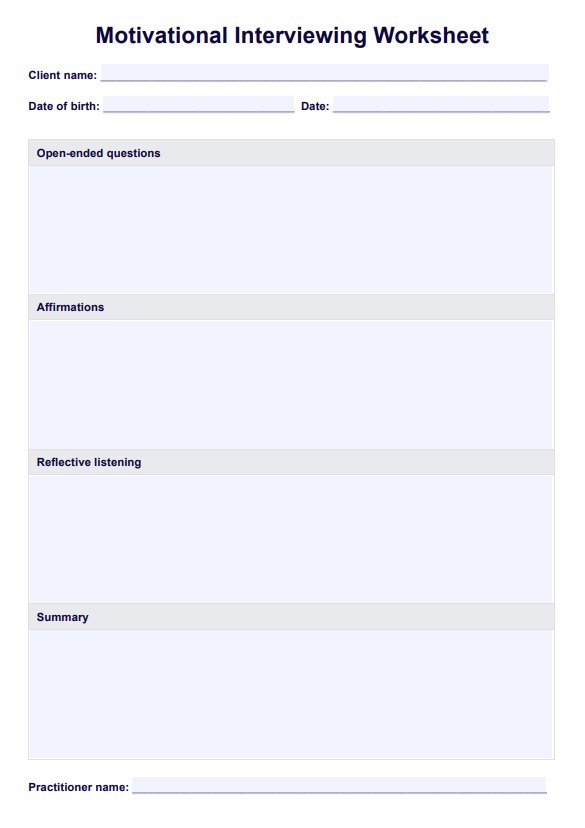Conduct Disorder Test
Assessing conduct disorder in individuals is crucial for effective intervention. Download Carepatron's free PDF example of a Conduct Disorder Test and learn how to use it effectively.


What is conduct disorder?
Conduct Disorder stands as a distinctive mental health condition recognized by a persistent pattern of behaviors that violate societal norms and the rights of others. It often emerges during childhood or adolescence, with a wide-ranging impact on personal, familial, and social dynamics. Mental health professionals refer to specific diagnostic criteria outlined in manuals like the Diagnostic and Statistical Manual of Mental Disorders (DSM) to diagnose Conduct Disorder.
The diagnostic criteria for Conduct Disorder encompass a spectrum of problematic behaviors, including aggressive conduct, deceitfulness, theft, and serious rule violations. When left unaddressed, these behaviors can escalate and lead to physical harm to oneself or others. It's crucial to understand that a conduct disorder diagnosis doesn't merely involve isolated instances of misbehavior but rather a pervasive and persistent pattern that interferes significantly with a child's or adolescent's daily life.
Aggressive behavior is a hallmark feature of conduct disorder, taking various forms such as physical aggression toward people or animals, destruction of property, and a consistent disregard for rules. These actions may indicate an underlying struggle with emotional regulation and impulse control, making early intervention crucial.
Conduct Disorder Test Template
Conduct Disorder Test Example
Symptoms and characteristics of conduct disorder
Conduct Disorder is characterized by a range of persistent and disruptive behaviors that significantly deviate from age-appropriate societal norms. These behaviors often fall into four main categories:
- Aggressive behaviors toward people and animals
- Destruction of property
- Deceitfulnes or theft
- Serious violations of rules
Within these categories, specific symptoms may include physical aggression such as fights, bullying, or using weapons, as well as a pattern of lying, stealing, or engaging in acts of vandalism.
These symptoms typically emerge in childhood or adolescence and can lead to severe consequences if left unaddressed. It's essential to recognize these signs early on to facilitate timely intervention and support for individuals grappling with conduct disorder.
Causes of conduct disorder
The causes of conduct disorder are multifaceted and involve a complex interplay of genetic, biological, environmental, and psychosocial factors. Let's dive into this deeper:
- Genetic predisposition: This can contribute to an individual's vulnerability to developing conduct disorder, suggesting a hereditary component.
- Biological or neurological: This factor imbalances in brain chemistry may influence impulsive and aggressive behaviors observed in those with the disorder.
- Environmental: Factors such as exposure to violence, unstable family dynamics, or inconsistent discipline can also significantly impact the development of conduct disorder.
- Psychosocial: Traumatic experiences or neglect during early childhood may contribute to the manifestation of disruptive behaviors. Furthermore, growing up in communities with high crime levels or limited resource access can exacerbate the risk.
The diagnosis of conduct disorder involves a thorough assessment by mental health professionals, typically following the criteria outlined in the Diagnostic and Statistical Manual of Mental Disorders (DSM).
Professionals gather information from multiple sources, including interviews with the individual, parents or guardians, teachers, and other relevant parties who can provide insights into the individual's behavior across different settings.
What is a Conduct Disorder Test?
A Conduct Disorder Test is a diagnostic tool employed by mental health professionals to assess and evaluate the presence of conduct disorder in individuals. It plays a crucial role in identifying patterns of behavior that may indicate serious conduct problems, which are considered disruptive behavior disorders.
Conduct Disorder Tests are structured assessments designed to adhere to the diagnostic criteria established by authoritative sources such as the American Psychiatric Association's Diagnostic and Statistical Manual of Mental Disorders (DSM).
These tests encompass a comprehensive evaluation of various behavioral aspects, aiming to differentiate conduct disorder from other psychiatric disorders like bipolar disorder or antisocial personality disorder.
The importance of a Conduct Disorder Test lies in its ability to provide a systematic and standardized approach to identifying and diagnosing individuals struggling with disruptive behavior patterns.
How do you score this test?
Scoring the Conduct Disorder Test is a systematic process that involves evaluating responses and behaviors based on predetermined criteria. Follow these steps to achieve the test and interpret the results accurately:
Assessment of behavior categories
The first step involves categorizing the observed behaviors into specific domains outlined in the diagnostic criteria. These categories typically include aggression toward people and animals, destruction of property, deceitfulness or theft, and serious rule violations. Each category may have subcomponents that contribute to a comprehensive understanding of the individual's conduct-related challenges.
Frequency, intensity, and duration
Once behaviors are categorized, the evaluator assesses each identified behavior's frequency, intensity, and duration. This step is crucial for determining whether the observed conduct aligns with the diagnostic criteria for Conduct Disorder. It helps differentiate occasional misbehavior from persistent and severe conduct problems.
Scoring guidelines
Conduct Disorder Tests often have established scoring guidelines that assign numerical values or ratings to specific behaviors. These guidelines are based on the severity and impact of the behavior on the individual and their environment. Professionals follow these guidelines to maintain consistency and objectivity in the assessment process.
Composite score calculation
After individual behaviors are scored, a composite score is calculated to assess the severity of conduct disorder symptoms. This aggregate score aids in categorizing the individual's condition as mild, moderate, or severe, guiding treatment planning and intervention strategies.
Interpretation and diagnosis
The final step involves interpreting the composite score in the context of the established diagnostic criteria. Mental health professionals use this information to formulate a clear diagnosis of conduct disorder. The interpretation also considers the potential presence of co-occurring mental health issues or additional factors influencing the observed behaviors.
How do you interpret the results of this test?
Understanding the results of a Conduct Disorder Test requires a systematic approach to glean valuable insights into an individual's behavioral patterns. The interpretation process involves the following key steps:
- Behavioral patterns: Examine the identified behavioral categories, focusing on aggression, property destruction, deceitfulness, and violations of rules.
- Severity assessment: Evaluate the frequency, intensity, and duration of each behavior, considering scoring guidelines to determine the severity of conduct-related symptoms.
- Composite score analysis: Interpret the composite score, categorizing it as mild, moderate, or severe, reflecting the overall severity of conduct disorder symptoms.
- Diagnostic criteria alignment: Ensure that the observed behaviors align with the diagnostic criteria for Conduct Disorder as outlined in authoritative sources like the DSM.
- Consider co-occurring factors: Consider the potential presence of co-occurring mental health issues or external factors influencing behavior to provide a comprehensive understanding.
- Treatment implications: Translate results into actionable insights for treatment planning, guiding the development of targeted interventions and support strategies tailored to the individual's needs.
Next steps
Upon obtaining the results of a Conduct Disorder Test, it is crucial to initiate a strategic and supportive plan for the individual based on the findings. Here are the key steps to take:
- Consultation with a mental health professional: Seek guidance from a qualified mental health professional to interpret the results accurately and comprehensively to understand the individual's condition.
- Feedback session with the individual: Schedule a feedback session to discuss the results with the individual, fostering open communication and addressing any concerns or questions they may have.
- Collaborative treatment planning: Work collaboratively with the mental health professional to develop a tailored treatment plan, considering the severity of symptoms and the individual's unique needs.
- Incorporate support systems: Involve family members, educators, and other support systems in the treatment process to create a holistic approach and ensure a consistent and supportive environment.
- Explore therapeutic interventions: Identify and implement evidence-based therapeutic interventions, such as cognitive-behavioral therapy (CBT) or family therapy, to address specific behavioral challenges and promote positive change.
What are the benefits of taking this test?
Taking a Conduct Disorder Test can yield valuable insights into an individual's behavioral patterns, providing several benefits that contribute to informed decision-making and tailored interventions. Here are key advantages associated with undergoing a Conduct Disorder Test:
Early identification of behavioral issues
Early detection of disruptive behavior patterns allows for timely intervention, preventing the escalation of conduct disorders and addressing issues before they become more challenging to manage.
Precision in diagnosis
The structured nature of the test, adhering to diagnostic criteria, enhances the precision of the diagnosis. This accuracy is crucial for formulating targeted treatment plans that address the specific needs of the individual.
Tailored treatment planning
Results from the test enable mental health professionals to develop personalized treatment plans. This tailored approach considers the severity of symptoms, underlying causes, and individual characteristics, optimizing the effectiveness of therapeutic interventions.
Facilitates communication and understanding
The test results serve as a communication tool between mental health professionals, individuals, and their support systems. This facilitates a shared understanding of the challenges, fostering open communication and collaboration in the treatment process.
Supports educational planning
For individuals in an educational setting, the test results can guide the implementation of support strategies to address a child's behavior, ensuring a conducive learning environment and promoting academic success.
How is conduct disorder treated by professionals?
Professionals employ a multi-faceted approach to treat Conduct Disorder, recognizing the complex interplay of factors contributing to disruptive behavior. Here are key steps in the treatment process:
Early intervention strategies
Early identification is paramount. Professionals implement targeted interventions to address behavioral issues in their early stages, aiming to prevent the progression of conduct disorder.
Behavioral therapy
Cognitive-Behavioral Therapy (CBT) is a cornerstone of treatment. It helps individuals recognize and modify negative thought patterns and behaviors, fostering positive coping mechanisms and enhancing emotional regulation.
Family-based interventions
Involving family members is crucial. Family therapy helps improve communication, establish consistent discipline, and create a supportive environment reinforcing positive behavior.
Social skills training
Professionals work on enhancing social skills, teaching individuals effective ways to interact with others, resolve conflicts, and navigate social situations, reducing the likelihood of aggressive or oppositional behavior.
School-based support
Collaborating with educators is essential. Professionals develop strategies to support the individual in an educational setting, ensuring a conducive learning environment and addressing any challenges that may impact academic performance.
Why use Carepatron as your mental health and therapy software?
Carepatron stands out as a premier platform, providing an integrated and user-friendly solution for professionals in the field. With a commitment to facilitating seamless and effective mental health practice, Carepatron offers a range of features that make it the go-to choice for practitioners.
Comprehensive mental health practice management software
Carepatron is a one-stop solution for mental health practitioners, offering comprehensive mental health practice management software. It streamlines administrative tasks, such as appointment scheduling, billing, and client records management, allowing professionals to focus more on delivering quality care.
Telehealth platform for remote services
Recognizing the evolving landscape of healthcare, Carepatron incorporates a robust telehealth platform. This feature enables practitioners to conduct secure and HIPAA-compliant virtual sessions, expanding their reach and providing flexible options for clients who may prefer remote consultations.
Psychiatry EHR for efficient record-keeping
Carepatron's psychiatry electronic health record (EHR) ensures efficient and organized record-keeping. With tailored templates for mental health assessments, including those related to conduct disorder, professionals can seamlessly document and access client information, enhancing the quality of care and ensuring compliance with industry standards.

Commonly asked questions
Conduct Disorder symptoms encompass a range of disruptive behaviors, including aggression towards people or animals, destruction of property, deceitfulness or theft, and serious violations of rules. These patterns often persist over time and can significantly impact the individual's social, academic, and familial interactions.
Professionals typically employ structured assessments, such as Conduct Disorder Tests, to evaluate behavioral patterns and align them with diagnostic criteria. The process involves interviews, behavioral observations, and information gathering from various sources to understand the individual's conduct-related challenges comprehensively.
The criteria for Conduct Disorder, as outlined in the Diagnostic and Statistical Manual of Mental Disorders (DSM), include persistent patterns of aggression, deceitfulness, theft, and serious rule violations. The behaviors must significantly deviate from age-appropriate societal norms and negatively impact the individual's daily functioning.


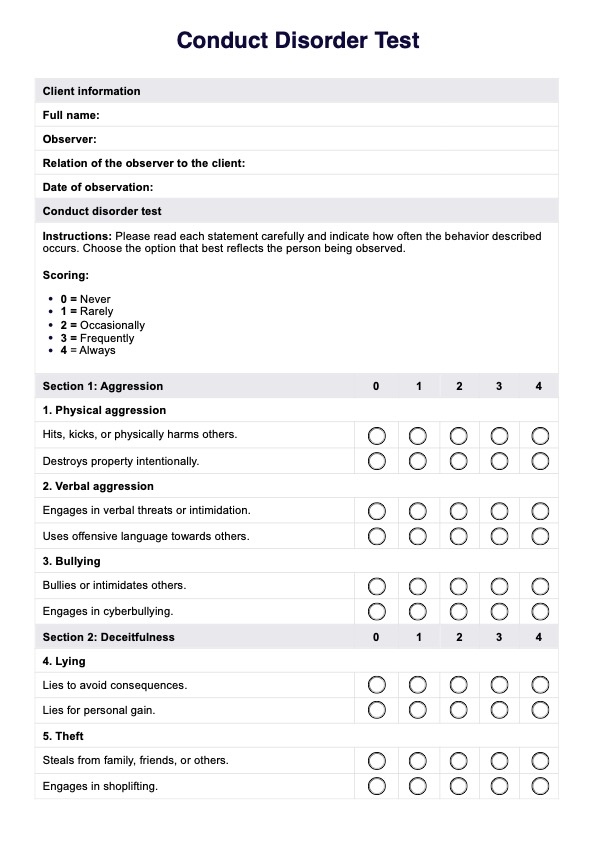
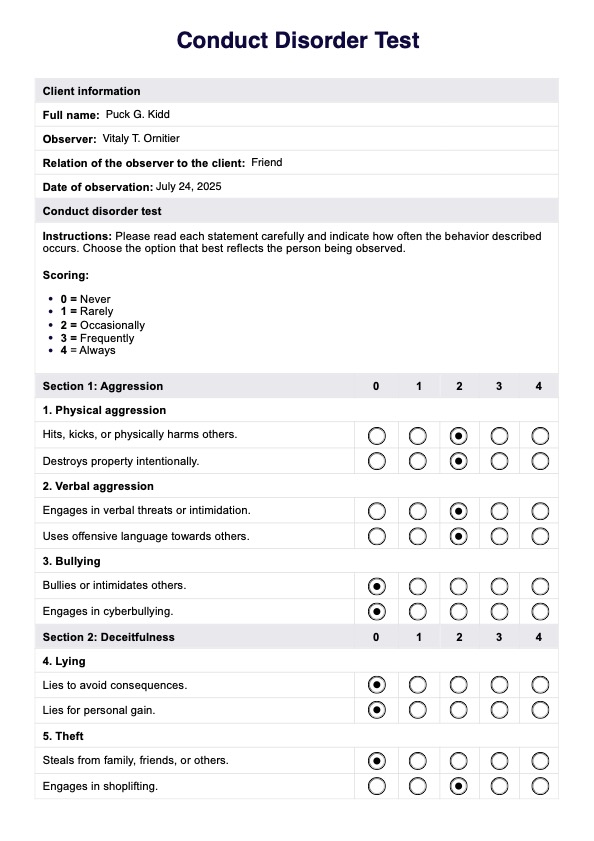

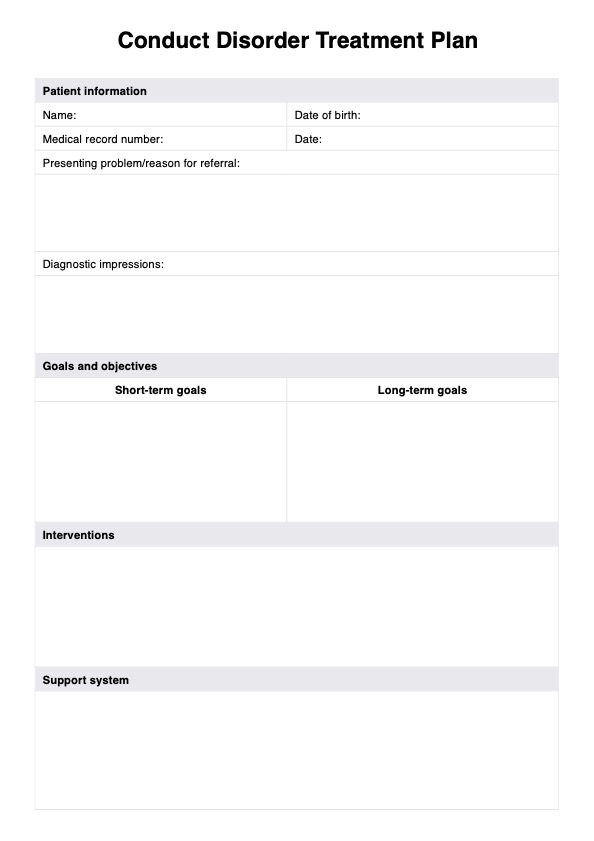
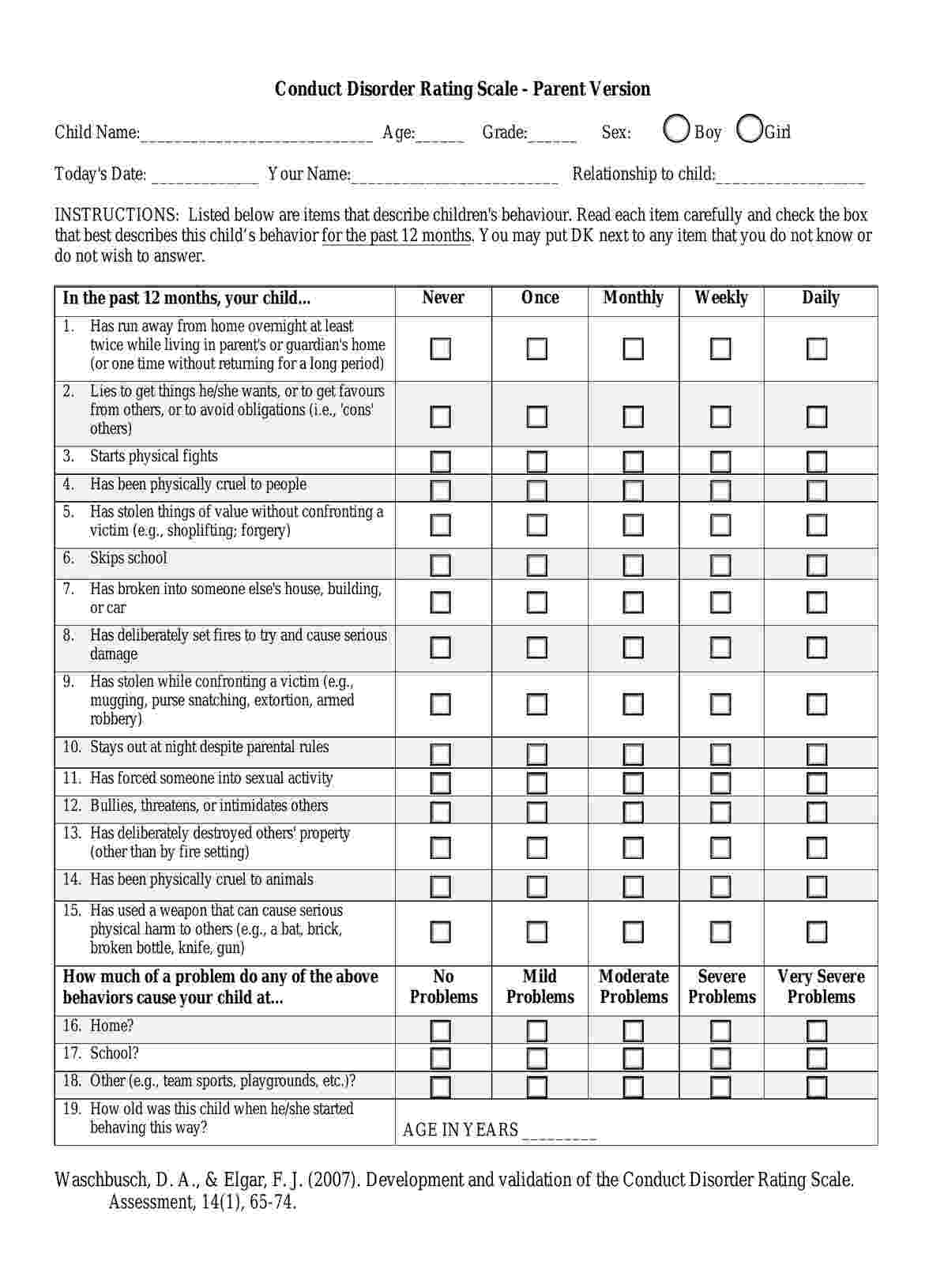
















-template.jpg)



















































































